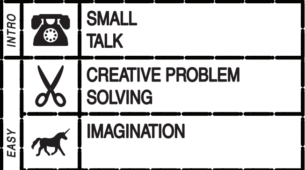The game I played this week was Doki Doki Literature Club, developed by Team Salvato available on macOS and PC (I played on my Macbook through Steam). On the surface, it presents itself as a light-hearted, slice-of-life dating simulator where the player, a seemingly average high schooler, joins a literature club and gradually gets to know its four female members. However, the game subverts expectations dramatically, transitioning from a cheerful visual novel into a psychological horror experience that critiques genre conventions and player complicity. Despite its deceptively cute art style, Doki Doki Literature Club (which I’ll refer to as DDLC from now on) engages with deeper themes around mental health, gender roles, emotional manipulation, and player agency—making it a fascinating, if flawed, subject for feminist critique.
When I first started playing Doki Doki Literature Club, my roommates gave me some seriously weird looks—after all, the game looks like your stereotypical pastel-pink dating sim filled with bubbly anime girls and high school flirtation. Yet, the game quickly spiraled into a metafictional horror story that confronts the player with their own assumptions and complicity. Beneath the surface, DDLC is a deeply unsettling critique of the genre’s treatment of women, using the illusion of choice and the breakdown of player control to challenge how games objectify female characters and deny them meaningful agency. Playing DDLC through a feminist lens means engaging with this tension between player power and character autonomy, critiquing the dating sim genre by exposing systems of control, objectification, and limited female agency—yet ultimately fails to offer empowering and empathetic alternatives, reinforcing the very constraints it seeks to subvert.
What does it mean to play Doki Doki Literature Club as a feminist?
Playing DDLC through a feminist lens means acknowledging how the game weaponizes dating sim tropes to expose the objectification and psychological flattening of female characters that often occurs in these games. Each club member—Sayori, Natsuki, Yuri, and Monika—initially appears to fit neatly into anime archetypes: the bubbly childhood friend, the tsundere, the shy intellectual, and the composed club president. These tropes are especially prevalent in shojo manga—a popular romantic anime genre focused on young guys and girls in school life—initially fools the player into thinking they are playing yet another typical high-school dating simulator.




Images 1-4: Each girl within Doki Doki Literature Classroom representing a specific (generic) female archetype within a standard dating sim
Yet, as the narrative unfolds, each of these characters is revealed to be far more complex: Sayori’s cheerful façade masks suicidal depression, Yuri’s shyness curdles into obsession and self-harm, and Natsuki’s cuteness hides signs of abuse, tropes rarely seen within the shojo genre. From a feminist perspective, this breakdown of character archetypes can be seen as a meta-commentary on how women are often written into predefined boxes within gaming. Rather than presenting these girls as love interests with predictable paths, the game forces players to confront the consequences of treating women as rewardable “routes” instead of fully developed people. In that way, DDLC both critiques and reenacts the objectification embedded in the dating sim genre—raising ethical and philosophical questions about the role of player agency in games designed around romantic conquest.


Images 5-6: Sayuri revealing her depression to the player in 1st Playthrough, Yuri’s obsessive self-harm revealed to the player in 2nd Playthrough
By exaggerating and then dismantling these character tropes, DDLC exposes the emotional exploitation embedded in many romance-based games. But it doesn’t just critique the genre from the outside—it implicates the player directly, using horror to confront them with the disturbing implications of their assumed control.
Feminist Theories at Play—and Where the Game Fails
In Chapter 4 of Play Like a Feminist, Shira Chess explores the idea that games can challenge dominant gender norms not only through representation but also through the kinds of labor and care they encourage. While DDLC doesn’t directly affirm care labor or emotional play in the same way as a game like Florence or Monument Valley 2, it does destabilize the emotional labor expected of its female characters. The girls in the literature club are not there merely to soothe, support, or fulfill the emotional needs of the player. Instead, they eventually become vehicles for unsettling commentary: Sayori’s depression is not “fixable” through affection, Yuri’s obsession becomes disturbing, and Monika breaks the fourth wall entirely, revealing that she has been manipulating the entire game world to win the player’s attention.
Monika’s actions, in particular, raise complicated questions about autonomy and control. As a character who becomes self-aware, Monika realizes she is trapped in a game where her purpose is to be chosen by a male-coded player. Her radical act—deleting all other characters—is horrifying, yet arguably a twisted expression of feminist resistance and agency. She refuses to remain a background character in someone else’s story, but takes matters into her own hands to fight back against the constraints of the genre itself.
But her obsession with the player is not romantic in the traditional sense. As I realized while reflecting on the game: Monika doesn’t love “you” as a person—she loves what you represent. To her, the player isn’t a character but a symbol of reality. Everything else around her—Sayori, Yuri, Natsuki—is artificial, scripted. Her love is less a romantic longing than a desperate reach for something authentic in a fabricated world. In that sense, she’s not so much in love as she is gasping for air—trying to wake up from a dream by clinging to the only thing that feels real.
Yet even this longing, which drives her rebellion, is shaped by the game’s core logic, where female characters revolve around the player’s presence and their desires are entirely centered on winning his affection. Monika’s resistance doesn’t transcend the system; it remains coded through possessiveness and competition. In trying to break free, she ironically reinforces the very system she hopes to escape—amplifying the other girls’ trauma to eliminate her rivals. This reflects how even her resistance is constrained by a design that frames all female characters in competition for male approval, rather than reimagining alternative forms of connection or care. In this sense, Monika does not reject the emotional labor expected of women in games—she simply weaponizes it.

Image 7: Monika revealing why she made all the other girls more “unlikeable” by amplifying their traits to achieve her “perfect” ending (in which she forces the player to choose her)
Despite Monika’s acts of defiance, the game punishes her rebellion by forcing the player to delete her file, erasing the only character who gains agency to restore a “normal” version of the game where Monika is erased from existence. In doing so, DDLC suggests that empowered women who resist romanticization must be purged to restore the status quo. This ending suggests an uneasy moral: female characters who resist their roles must be deleted or silenced to restore narrative order. While Monika’s agency is thrilling and thought-provoking, her ultimate fate reflects an unwillingness to imagine a world where female resistance is allowed to endure.
How Feminist Perspectives Could Improve the Game
While DDLC critiques the genre’s treatment of women, it arguably doesn’t go far enough in imagining alternative possibilities. The game critiques objectification but doesn’t provide a model for healthy, feminist relationships. It shows how harmful dating sim tropes can be but not how games might uplift or affirm more complex, empathetic portrayals of emotional connection.
Applying intersectional feminist perspectives, as Shira Chess advocates, could dramatically deepen the game. For one, all characters in DDLC are coded as thin, conventionally attractive, light-skinned, and oriental. An intersectional reimagining might include greater diversity in body types, races, sexual orientations, and gender identities. Moreover, the game rarely questions the heteronormative assumption that the player is a male pursuing women. Allowing for queered perspectives and player identities would help dismantle the default male gaze that remains at the core of the game’s design.
Finally, the game misses a chance to reframe emotional labor as something shared rather than extracted. Instead of reinforcing the tragic narrative that women are broken, suffering, or psychotic when they resist idealization, a feminist DDLC might explore how genuine connection—based on mutual vulnerability and consent—could rewrite these scripts entirely.
Conclusion
Doki Doki Literature Club is a clever, unsettling game that successfully deconstructs the dating sim genre through horror and metafiction. It opens a window for feminist critique by laying bare the emotional and ethical manipulations built into games where women are reduced to “routes” and choices. Yet while it critiques these structures, it stops short of reimagining them. A feminist playthrough of DDLC is less about saving the girl and more about questioning why she needed saving in the first place—and what it means when the only escape is deletion.
(Note: While I did play through the game once, I was curious about the other routes but didn’t have time to run-through the game again, so I defaulted to online play-throughs for more information)



